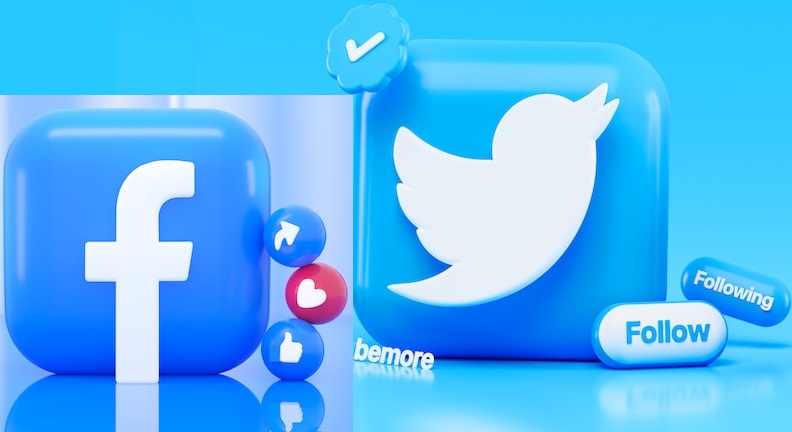1. Platform Purpose: Twitter is a microblogging platform focused on real-time, concise updates and conversations. It revolves around sharing short messages called “tweets.” Facebook, on the other hand, is a general social networking platform that allows users to connect with friends, share various types of content, join groups, and engage in longer-form discussions.
2. Content Format: Twitter is known for its character limit, initially set at 140 characters (now expanded to 280 characters). It emphasizes brevity and encourages quick, snappy updates. Facebook allows for longer posts, multimedia content, and the creation of albums, events, and pages.
3. User Base: Twitter tends to attract a more diverse user base, including journalists, public figures, and celebrities, who often use the platform for news updates, opinions, and engagement. Facebook has a broader demographic reach, with a larger user base that includes individuals of various ages and interests.
4. Reach and Engagement: Facebook generally has a wider reach due to its larger user base, with over 2.8 billion monthly active users as of September 2021. However, Twitter can be particularly effective for real-time conversations, trending topics, and engaging with specific communities or influencers. The level of engagement can vary depending on the content and audience.
5. Algorithmic Feed vs. Chronological Timeline: Facebook’s news feed is driven by an algorithm that curates content based on user preferences, past engagement, and other factors. Twitter, by default, displays tweets in chronological order, although it also offers an algorithmic timeline option.
6. Advertising and Monetization: Both platforms offer advertising options for businesses and individuals to reach a broader audience. Facebook’s advertising tools, including detailed targeting options, make it a powerful platform for advertising campaigns. Twitter offers advertising opportunities like promoted tweets and trends.
Regarding reaching more followers, it can depend on various factors, including your target audience, content strategy, and engagement efforts. While Facebook’s larger user base may offer more potential reach, Twitter’s real-time nature and the use of hashtags can help you engage with specific communities or trending topics more effectively.
Ultimately, the choice between Twitter and Facebook depends on your goals, target audience, and the type of content you wish to share. It’s common for individuals and businesses to have a presence on both platforms, leveraging their unique features and strengths to reach and engage with their desired audience.




